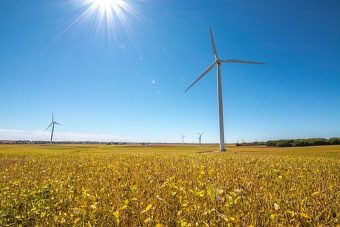
Renewable energy sources in the United States grew by another 10% in the first half of 2017, according to new figures published by the country’s Energy Information Administration and highlighted by Ken Bossong’s Sun Day Campaign.
The US Energy Information Administration (EIA) recently published its Monthly Energy Review, with data through to the end of the first half of 2017 revealing that the country’s strong production and integration of renewable energy capacity has continued through the first half of the year at the same time that demand for nuclear power and fossil fuels declined.
Specifically, renewable energy sources provided for 13.5% of domestic energy production during the first half of 2017 compared to 12.6% in the same period a year earlier. Energy produced was 10.3% higher than a year ago and 21.3% higher than two years ago, while consumption similarly grew, increasing from 9.6% in 2015 and 10.8% in 2016 up to 11.9% in the first half of 2017.
Conversely, energy output from nuclear and coal power has dropped significantly. Nuclear power plants contributed 3.3% less energy in the first half of 2017 than a year ago, and now accounts for only 9.4% of the country’s energy production and only 8.4% of energy consumption.
Despite the fact that the United States managed to increase coal production by 16.1% during the first half of the year, the country’s overall consumption of fossil fuel energy sources continued to decline, slipping from 81.7% of total energy use in the first half of 2015 to 80.3% in the first half of 2016, and to 79.5% in 2017.
“Notwithstanding desperate efforts by the Trump Administration to prop up nuclear power and fossil fuels, they continue to lose ground to the mix of renewable energy sources,” explained Ken Bossong, Executive Director of the SUN DAY Campaign, who each month is responsible for putting EIA’s data-intensive figures into context. “Time to wake up and smell the coffee, Mr. President!”
Source: cleantechnica.com

